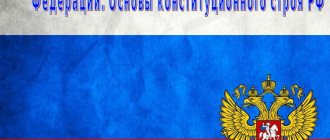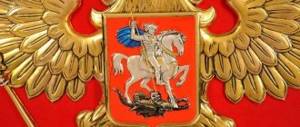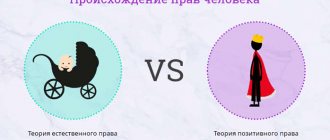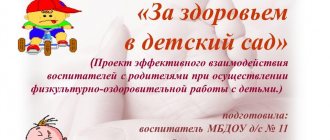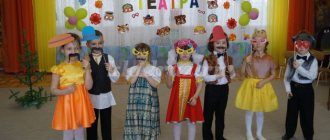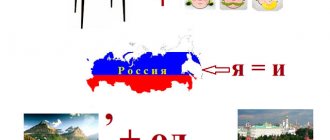Leisure in kindergarten with a presentation for the birthday of the Republic of Mari El
Leisure summary for the birthday of the Republic of Mari El “Blossom, my native land”
Goal: to form feelings of patriotism, love and affection for your culture and your people, for your land, your Fatherland, to continue to acquaint children with the history and culture of the people of Mari by means of electronic educational resources virtual ethnotours in the Republic of Mari El. Methodological material: notes, presentation. Equipment: projector, stereo system, laptop, Internet connection. Musical repertoire : Anthem of Russia; Anthem of Mari El; "Gusli"; “Mari El Republic is my” sound studio, song “Mari El” Words by V. Izilyanova, Music by V. Zakharov (collection of Music by Yochasadishte 1994); dance with towels “Mari Solyk”; “Havai, molan kenezh shortezh” lyrics by V. Abukaev, music by S. Makov (Disk by Vechaslav Osipov “Autumn mood” tr.2); game "Lapti"; “Modyna Veslan” lyrics by Yu. Isakov, music. S. Makova with noise orchestra; Mountain Mari dance. Preliminary work with children: conversations with children about their native land, about the state symbols of Russia, Mari El; visiting the mini-museum of the preschool educational institution, the museum at the library, getting acquainted with the fairy tale “Shy Pan, Shiy Pampalche”, visiting the virtual museum named after. Temofeya Evseeva from Pampalche, learning proverbs, sayings, songs, poems, dances. Note: the teacher must be fluent in ICT and the Internet. The song “My Mari El Republic” plays,
children in national costumes perform a dance composition, and when finished they line up in a semicircle.
(Slide 1) 1. Presenter in national costume: (Slide 2) Hello to you, my native land, With your dark forests, With your great river And with vast fields! Greetings to you, dear people, tireless Hero of labor, in the midst of winter and in the summer heat! Hello to you, my native land! (S.D. Drozhzhin) 2. Presenter: today is November 4, when the whole country of our Republic celebrates its birthday. Presenter : The Republic of Mari El is part of the Russian Federation, our great Motherland of Russia Child: Russia has a majestic double-headed eagle on its coat of arms, So that He could look to the west and east at once. He is strong, wise and proud. He is Russia's free spirit. (V. Stepanov) Voice-over announcer: the main songs of Russia, the Republic of Mari El are heard (Slide 3 the anthem of Russia is played) (Slide 4 the anthem of the Republic of Mari El is played)
(children read a poem by A. Podolsky to the sounds of gusli) “Oh, Mari El” (slide 5)
1-child The expanse of fields and the beauty of a forest clearing The wealth of fields and the ringing of church bells. Children's smiles and fountains fan like the kindness of the people living here. 2-child The original land of the fatherland is Mari, From the depths of centuries your history. Our land of forests is dear and close, We are with you forever, Russian land! 3-child Here the lakes are quiet, the grasses are fragrant, and in the sky there are bird voices. And on the May Day of the Father's Glory of the Orchestras there is a rainbow and the first dew. The song “Mari El” is performed. Words by V. Izilyanova, Music by V. Zakharov (collection of Music by Yochasadishte 1994) Presenter: (slide 6) There is a Republic on the map of Russia. I have the honor to tell you about it. It’s called Mari El and I always talk about it. with pleasure I.
Presenter: Take a look at the map of the Republic of Mari El and you will see 14 districts and 4 cities on it. Now we’ll give you a little quiz and see what you know about our region. Quiz 1. What do we call Little Motherland? (slide 7) 2. What is the name of our district? 3. Name the cities of our Republic? (slide 4. Which city is the capital of our Republic? (slide 9) Presenter: There are many cities on earth, But you are forever dear to my heart, Dressed in the greenery of gardens, Dear Yoshkar-Ola Presenter: Modern Yoshkar-Ola is a beautiful and elegant city. Picturesque groves surround it on all sides. All summer, roses grow on squares, boulevards, squares, maples, birches, and poplars rustle with their leaves. Girls perform the “Mari Solyk” dance with towels Presenter: (slide 10) The Mari region is an amazingly beautiful and diversity of nature. The Volga, the longest and deepest river in Europe, flows for 155 kilometers through our Republic. Among the forests and swamps, hundreds of springs and springs originate, which feed the rivers and lakes of our region, as well as the Volga. And how beautiful is the native language. It carries information from the depths of centuries, it is a living connection connecting generations of people into one great historical whole. In the language of our people all their thoughts and aspirations, their character, their aspirations are hidden. Semyon Vishnevsky writes very beautifully in his poem about our region, here listen. (Children come out and read the poem) Shochmo mlande 1 child: Ilyshim da viyim Puenat mylam. Kush om kai, om mie – Ty deket tolam. 2nd child: Nur kava umbalne Chuchkalta turii. And the chashker longashte Shushpyk shyp ok liy. 3rd child: Ikte-vesysht dene Nuno tanasat... Myiyn ver-shorem Moktaltem murat. 4th child: Shochmo mlande vele Lishyl mylanem. Lachak tudyn dene Chon kanen ilem. 5th child: Kande shincha semyn Koyit er-vlaket. Chylt uzhar posto gai Tyiyn olyket. 6th child: Kalykem pesh poro Yes ura chonan. Tache tide murym Poleklem tudlan Song “Avai, molan kenezh shortezh” lyrics by V. Abukaev, music by S. Makov (Disk by Vechaslav Osipov “Autumn mood” tr.2)
Now we’ll give you a little quiz and see what you know about our region. Quiz 1. What do we call Little Motherland? (slide 7) 2. What is the name of our district? 3. Name the cities of our Republic? (slide 4. Which city is the capital of our Republic? (slide 9) Presenter: There are many cities on earth, But you are forever dear to my heart, Dressed in the greenery of gardens, Dear Yoshkar-Ola Presenter: Modern Yoshkar-Ola is a beautiful and elegant city. Picturesque groves surround it on all sides. All summer, roses grow on squares, boulevards, squares, maples, birches, and poplars rustle with their leaves. Girls perform the “Mari Solyk” dance with towels Presenter: (slide 10) The Mari region is an amazingly beautiful and diversity of nature. The Volga, the longest and deepest river in Europe, flows for 155 kilometers through our Republic. Among the forests and swamps, hundreds of springs and springs originate, which feed the rivers and lakes of our region, as well as the Volga. And how beautiful is the native language. It carries information from the depths of centuries, it is a living connection connecting generations of people into one great historical whole. In the language of our people all their thoughts and aspirations, their character, their aspirations are hidden. Semyon Vishnevsky writes very beautifully in his poem about our region, here listen. (Children come out and read the poem) Shochmo mlande 1 child: Ilyshim da viyim Puenat mylam. Kush om kai, om mie – Ty deket tolam. 2nd child: Nur kava umbalne Chuchkalta turii. And the chashker longashte Shushpyk shyp ok liy. 3rd child: Ikte-vesysht dene Nuno tanasat... Myiyn ver-shorem Moktaltem murat. 4th child: Shochmo mlande vele Lishyl mylanem. Lachak tudyn dene Chon kanen ilem. 5th child: Kande shincha semyn Koyit er-vlaket. Chylt uzhar posto gai Tyiyn olyket. 6th child: Kalykem pesh poro Yes ura chonan. Tache tide murym Poleklem tudlan Song “Avai, molan kenezh shortezh” lyrics by V. Abukaev, music by S. Makov (Disk by Vechaslav Osipov “Autumn mood” tr.2)
The harp is sounding. Presenter: guys, do you hear these magical sounds... At this time, Pampalche appears in the hall in her hands. Pampalche: Poro keche! Good afternoon guys! I'm Pampalche, do you recognize me? Which Mari fairy tale am I from? Children's answers: “Shy sir, shy Pampalche”... Pampalche : That's right, well done. I’ve been watching you for a long time, listened to you read poetry, sing songs, so I couldn’t resist and decided to drop by for a little while. Presenter: it’s good that you came to us, today we glorify and praise our Mari region in poetry and songs. Pampalche: Shochmo mlande-kidkopashte shegre, this proverb says that “The native land is sweet in a handful.” Presenter: and our guys also know proverbs about the native land - The native land is the mother, the foreign land is the stepmother. - Who was born where, was useful there. - On the native side, even the stones bow. “In your homeland, even a tree will smile at you.” - In my homeland, even a cloudy day is bright. Pampalche: Well done guys, I didn’t come to you empty-handed, here’s a tuesok, it contains household items that our grandparents used, I’ll tell you riddles, and if you guess, I’ll show it to you. He has a lot of teeth, but he doesn't eat anything. (Comb) The more I spin, the fatter I get. (Spindle) If you tie it, they will go, if you untie it, they will stay. (Lapti) To clothe and feed themselves, our ancestors had to work very hard, but they also knew how to relax, especially on holidays they gathered for gatherings, sang songs, played games. Do you like to play? Then we will now play the folk game “Lapti”. The game “Lapti” is played.
Description of the game: children stand in a circle, the leader in the center has unwound bast shoes in his hands, the leader twirls the bast shoes near the feet of the players, whoever does not have time to jump and steps on the bast shoes is the one is eliminated from the game.
Presenter: Modyna Veslan Children perform the song “Modyna Veslan” lyrics by Yu. Isakov, music. S. Makova with a noise orchestra on the chorus.
Pampalche: Guys, I already told you how our ancestors lived and we even visited (virtually) the T. Evseev Museum, which is located in our capital. Pampalche : Well done guys, today we will make another trip to one of the cities of our republic, Kosmodemyansk. This city has one wonderful open-air museum, where we will go. Children, together with Pampalche, take a virtual tour to the open-air museum (Slide 12) The journey is accompanied by a short story (The museum’s collections consist of outbuildings: a windmill, a forge, a residential hut, barns, a black bathhouse, a white bathhouse and many others , The area of the museum is more than five hectares. On its territory more than 60 different objects and buildings were built, over 2000 exhibits of antiquity, objects of labor and everyday life of the mountain Mari were collected. Everything typical of ancient settlements, dwellings and outbuildings, household and household items is collected here inventory of Mari peasants. The objects and exhibits presented in it give a complete picture of the economic activities, buildings, dwellings, vehicles, tools, household utensils of the peasants) Pampalche : did you like the trip? How do you remember it? Children's answers ( children perform the Mountain Mari dance)
Pampalche: thank you guys for the wonderful time I spent with you. I would like to thank you and I have prepared a surprise for you. Our guest is the folklore ensemble "Peledysh". Meet us! Pampalche: it’s time for us to say goodbye, goodbye guys, see you again! Presenter: Mari El!
All congratulations to you, my friendly republic! Happy birthday to you. Peace to you, good land! (Children go into groups) Presentation on the topic: Bloom, my native land
We recommend watching:
Leisure scenario in kindergarten in the senior group “Greetings Day” Summary of thematic leisure in the senior group on the theme “Sister Bird” Leisure scenario “Journey through Pushkin’s fairy tales” for children of senior preschool age Sports leisure in the senior group. Scenario
Similar articles:
Leisure and entertainment in kindergarten in the senior group
Conversation in the senior group of kindergarten on the topic: How people use leather and wood
Summary of a lesson on cognitive development in the senior group. Table manners
Summary of a lesson on cognitive development in the senior group. Rules of life
Lesson notes for the senior group of kindergarten
The property of a former official worth 374 million rubles was converted into state income
In Ulyanovsk, a court, at the request of the Prosecutor General's Office, seized property worth more than 374 million rubles from the former head of the Mari El Republic, Leonid Markelov. Last year, the Nizhny Novgorod District Court satisfied the first similar claim and converted the property of Mr. Markelov and his stepmother in the amount of 2.2 billion rubles into state income. The former head of the republic is being tried in Nizhny Novgorod on charges of bribery. According to investigators, in 2014–2016 he received 235 million rubles. under the guise of a fictitious transaction for the sale of shares for lobbying the interests of the director of the Akashevskaya poultry farm.
At the request of the Prosecutor General's Office, the Leninsky District Court of Ulyanovsk seized property worth more than 374 million rubles from the former head of the Mari El Republic, Leonid Markelov, the supervisory authority reports. It was not possible to contact Leonid Markelov’s lawyer Elena Vyatkina. Previously, she reported that the property of his ex-wife appeared in the case materials.
Leonid Markelov headed the Mari El Republic for 16 years. He is on trial in Nizhny Novgorod on charges of receiving a bribe of 235 million rubles. According to the investigation, in 2014–2016, in 2014–2016, the partners of businessman Nikolai Krivash paid with promissory notes for this amount for the sale of shares in OJSC Teplichnoye to the wife of the governor’s father, Tatyana Markelova, who owned LLC Telekompaniya 12 Region.
The investigation considers the sale of shares to be an imaginary transaction, which hides a bribe to Leonid Markelov for lobbying the interests of the large Akashevskaya poultry farm, which received billions of state support in the form of subsidizing interest rates on loans.
Nikolai Krivash was put on the wanted list and left Russia, and Leonid Markelov, along with the former director of the television company Natalya Kozhanova, ended up in a pre-trial detention center. The ex-governor was also charged with abuse of power and illegal trafficking in ammunition. According to investigators, Leonid Markelov hired personal security guards at the expense of the Mari El budget for 8 million rubles. and kept 30 rounds of ammunition from various small arms found on him during the search.
Last year, the Nizhny Novgorod District Court satisfied a similar civil claim by the Prosecutor General’s Office and recovered a total of 2.2 billion rubles from Leonid Markelov, his father’s wife Tatyana Markelova and eight companies. in the form of property and money. These include 120 real estate properties, 16 vehicles (cars and trucks), tractors and loaders, land plots, offices and apartments, a shopping center (3.3 thousand sq. m) in Yoshkar-Ola, as well as an unfinished sports complex. It was also decided to turn Leonid Markelov’s Patek Philippe watch for 1 million rubles, more than 8.5 million rubles, $224 thousand and €660 thousand into state income. The ex-official’s confiscation list included over 950 items of various luxury items worth 30 million rubles, including gold bars, collectible coins, paintings, collectible wines, icons, dishes and 15 elite wristwatches. The court also decided to seize 4.7 million rubles. in bank accounts and 2910 ordinary registered shares of Pamashyalsky Stone Quarry OJSC and turn into state income the property of companies that the investigation considers controlled by Tatyana Markelova.
The defendants did not agree with the court’s findings, considering the companies’ connection with Leonid Markelov through his father’s wife unproven, and tried to appeal them in the Nizhny Novgorod Regional Court. They argued that the conversion of property into state revenue drove them into losses and forced them to reduce their staff. Leonid Markelov insisted that he acquired the disputed property long before his governorship, and the special services carefully checked his income during his work as an official, and no one had any complaints.
Ani Ayvazyan, Samara
2. Mari El is a Volga republic, which is located next to Tatarstan and Chuvashia. It also borders the Kirov and Nizhny Novgorod regions.
3. Approximately 300 thousand Mari live in the republic, that is, half of this people. Ethnographers distinguish 3 groups of Mari: mountain, meadow and eastern.
4. Neighboring peoples called the Mari Cheremis (*čermis), probably from the Chuvash (Turkic language) śarməs. The meaning of the name “cheremis” has not been fully established. It is known for certain that the “mis” part, like “mari”, means “person”. The Mari, formerly known as the Cheremis, were famous in the past for their belligerence. Today they are called the last pagans of Europe, since the people managed to carry through the centuries the national religion, which a significant part of them still professes. This fact will be even more surprising if you know that writing among the Mari people appeared only in the 18th century.
5. Already in the 15th-16th centuries, Russian sources distinguished mountain cheremis (this name refers to both the mountain Mari and the Chuvash) and meadow cheremis. This is due not only to the already formed differences between the two sub-ethnic groups of the Mari: the inhabitants of the mountainous side are in more and more frequent contact with the Russians, the meadow ones are under the rule of the Kazan khans.
6.The establishment of Russian state power in the 1570-80s, accompanied by the imposition of Christianity, caused several Mari uprisings.
7.After their defeat, a mass migration to the east began, mainly in the territory of modern Bashkiria. This is exactly how the Eastern Mari emerged in the 17th and 18th centuries, whose dialects are closer to the dialects of the Meadow Mari.
8. At the time of the revolution of 1917, two literary language norms had already taken shape: the Mountain Mari and the Meadow-Eastern Mari languages; in 1926, the existence of two equal literary languages was officially established. In 1936, its own autonomy appeared. The very word “El” in the name of the republic is consonant with the Turkic “el” - land, country, territory.
9.The Mari are often called “the last pagans of Europe” because Christianity and Islam could not eliminate their traditional beliefs. According to sociological surveys in the early 1990s, about 27% of Mari in the Republic of Mari El adhere to Orthodoxy, 8% adhere to Mari paganism, and 21% are dual-religionists.
10. The self-name of the Mari people goes back to the word “Mari” or “Mariy”, which means “man”. A number of scientists believe that it may be associated with the name of the ancient Russian people Meri, or Merya, who lived on the territory of modern Central Russia and was mentioned in a number of chronicles.
11. In ancient times, the mountain and meadow tribes that lived in the Volga-Vyatka interfluve were called Cheremis. The first mention of them in 960 is found in a letter from the Khagan of Khazaria Joseph: he mentioned the “Tsaremis” among the peoples who paid tribute to the Khaganate. Russian chronicles noted the Cheremis much later, only in the 13th century, along with the Mordovians, classifying them among the peoples living on the Volga River.
12.The Mari language is the most Turkicized of the entire Finno-Ugric group.
THE CAPITAL OF THE REPUBLIC OF MARI EL IS THE CITY OF YOSHKAR-OLA
13.More than 50% of the Mari live on the territory of the Republic of Mari El, where they make up 41.8% of its population. The capital of the region is the city of Yoshkar-Ola.
14. The main area where the people live is the area between the Vetluga and Vyatka rivers. However, depending on the place of settlement, linguistic and cultural characteristics, 4 groups of Mari are distinguished.
15. Northwestern Mari live outside of Mari El, in the Kirov and Nizhny Novgorod regions. Their language differs significantly from the traditional one, but they did not have their own written language until 2005, when the first book was published in the national language of the northwestern Mari.
MOUNTAIN MARI
16.Mountain Mari are small in number today - about 30-50 thousand people. They live in the western part of Mari El, mainly on the southern, partly on the northern banks of the Volga. The cultural differences of the mountain Mari began to take shape in the 10th-11th centuries, thanks to close communication with the Chuvash and Russians. They have their own Mountain Mari language and writing.
17.Eastern Mari are a significant group consisting of settlers from the meadow part of the Volga to the Urals and Bashkortostan.
18. Meadow Mari are the most significant group in terms of numbers and cultural influence, living in the Volga-Vyatka interfluve in the Republic of Mari El.
19.The last two groups are often combined into one due to the maximum similarity of linguistic, historical and cultural factors. They form groups of Meadow-Eastern Mari with their own Meadow-Eastern language and writing.
20. The number of Mari, according to the 2010 census, is more than 574 thousand people. Most of them, 290 thousand, live in the Republic of Mari El, which translated means “the land, the homeland of the Mari.”
MARI IN BASHKIRIA
21. A slightly smaller, but largest community outside of Mari El is located in Bashkiria - 103 thousand people.
22. The remaining part of the Mari inhabits mainly the regions of the Volga region and the Urals, living throughout Russia and beyond its borders.
23. A significant part lives in the Chelyabinsk and Tomsk regions, Khanty-Mansi Autonomous Okrug.
24. After the revolution of 1917, the Mari Autonomy was formed, in 1936 - the Mari Autonomous Soviet Socialist Republic, in 1992 it was given the modern name of the Republic of Mari El.
25. The republic is notable for the splendor of the pristine nature preserved here. Most of it is occupied by forests, in which there are ecologically clean lakes and the beds of beautiful rivers.
26. The city of Yoshkar-Ola, the capital of Mari El, was founded in 1584 by decree of Tsar Fyodor Ioannovich, it was called Tsarevokokshaisk and was a military fortification on the Kokshaga River. Later the city was renamed Krasnokokshaysk, then, at the beginning of the 20th century, Yoshkar-Ola.
27. At the beginning of the two thousandth, on the initiative of President Mari El Markelov, intensive construction of various cultural, “historical” and administrative objects of the city began in Italian, Danish and Old Russian styles.
TSAREVOKOKSHAY KREMLIN IN YOSHKAR-OLA
28. Now in Yoshkar-Ola there is the newest Tsarevokokshay Kremlin in Russia, the Bruges embankment in the Danish style, the National Art Gallery in the Italian style and other interesting objects that decorate the city center with their unusual combination.
29. The Museum of the History of the City of Yoshkar-Ola presents collections of ethnography, decorative and applied arts, objects of archeology and heraldry, artwork, photographic documents related to the history of the city of Yoshkar-Ola.
30. In the Museum of Fine Arts of the city of Yoshkar-Ola you can see Mari fine and decorative arts, paintings and graphics by Russian artists, as well as sculptural compositions.
ACTOR OLEG TAKTAROV
31. One of the most famous Mari is actor Oleg Taktarov, who played in the films “Viy” and “Predators”. He is also known throughout the world as the “Russian Bear,” the winner of brutal UFC fights, although in fact his roots go back to the ancient Mari people.
32. The living embodiment of a real Mari beauty is the “Black Angel” Varda, whose mother was a Mari by nationality. She is known as a singer, dancer, model and curvy figure.
33. The culture of the local people, formed over many centuries, combined with Russian culture, as well as customs, traditions and folk crafts with an ancient history deserve special attention.
LAKE DEEP IN MARI EL
34. Lake Glukhoe in Mari El is one of the most beautiful and unique lakes in the Mari region! Accessible to hikers and bikers (without lighting a fire or bivouac). It has a length of 950 meters and a width of 100 meters.
35. Its basin is formed by the connection of four large karst sinkholes, with the two northern depressions having depths of up to 18 meters and separated from each other by a threshold 4 meters high.
36. The deepest is the third depression - the central one, the depth of which reaches 26 meters, and the threshold separating it from the northern depression is 12 meters high. The fourth depression is narrowed to 50-70 meters, and two funnels stand out in its relief: one with a depth of up to 20 meters, and the other up to 8 meters. Toward Lake Yalchik there is a zone of large sinkholes.
CITY OF KOZMODEMYANSK
37. The city of Kozmodemyansk is located 150 kilometers from Yoshkar-Ola on the banks of the Volga. Literary historians agree that it was this city, located near Cheboksary, that served as the prototype for the city of Vasyuki from the work “12 Chairs” by Ilf and Petrov.
38. In honor of this event, Benderiada is held here every year - a holiday with the participation of an actor in the image of Ostap Bender. I must say that the city has hardly changed since those times.
39. In the National Art Gallery of Yoshkar-Ola, in addition to the permanent exhibition of paintings by Mari El artists, exhibitions of various collections of museums in Russia and the world, as well as private collections, are regularly held.
LAKE SEA EYE - MUSHYL - THE MOST BEAUTIFUL IN MARI EL
40. The most beautiful and famous lake of Mari El is the Sea Eye (Mushyl), probably the most visited at any time of the year. The lake participated in the competition for the most beautiful places in the Volga region, as well as the Finno-Ugric world! Sea Eye Lake (near the village of Shariboksad) has a unique shape, like a volcanic crater with a destroyed outer wall. This relatively young karst failure occurred in the area of a high ledge up to 90 meters in height.
41. For a long time, Mari lived in typical old Russian log houses with a gable roof. They consisted of a vestibule and a living part, in which a kitchen with a stove was separately fenced, and benches for overnight accommodation were nailed to the walls. The bathhouse and hygiene played a special role: before any important task, especially prayer and rituals, it was necessary to wash. This symbolized the cleansing of the body and thoughts.
SHEREMETYEV CASTLE IN MARI EL
42. Sheremetyev Castle is an amazingly beautiful medieval castle located on the banks of the Volga. It was built in the 19th century by the wealthy merchant Sheremetyev. The distance from Yoshkar-Ola is 200 kilometers.
43. The traditional religion of the Mari proclaims faith in the forces of nature, in the unity of all people and everything on earth. Here they believe in a single cosmic god, Osh Kugu-Yumo, or the Great White God. According to legend, he instructed the evil spirit Yin to remove from the World Ocean a piece of clay from which Kugu-Yumo made the earth. Yin threw his part of the clay onto the ground: this is how the mountains turned out. Kugu-Yumo created man from the same material, and brought his soul to him from heaven.
HOLY MARI MOUNTAIN KAMAN-KURYK
44. The sacred Mari mountain Karman-Kuryk is located in the Morkinsky district of Mari El. This is not only a natural, but also a historical monument. When enemies attacked the Mari peoples, they hid in some mountains; subsequently these mountains were called “Pockets”.
45.One of them is “Pocket-Kuryk”. Its name also translates as “mountain fortress”. Pocket-Kuryk is located in the low-mountainous part of the Vyatka-Mari swell and is a complex geological natural monument of federal rank. On the steep northern and eastern slopes of the mountains, sediments of the Kazan stage of the Permian system come to the surface.
MUSEUM OF FOLK APPLIED ARTS IN YOSHKAR-OLA
46. The Museum of Folk Applied Arts in the city of Yoshkar-Ola is located in an old house, which in itself is a cultural heritage site. The museum displays examples of decorative and applied art of the Mari people. Excursions are available.
47. The main occupation of the Mari people was arable farming. Field crops - spelled, oats, flax, hemp, buckwheat, oats, barley, rye, turnips. Carrots, hops, cabbage, potatoes, radishes, and onions were planted in the gardens.
48.Animal husbandry was less common, but poultry, horses, cows and sheep were bred for personal use. But goats and pigs were considered unclean animals. Among men's crafts, wood carving and silver processing to make jewelry stood out.
49.From ancient times they were engaged in beekeeping, and later in apiary beekeeping. Honey was used in cooking, intoxicating drinks were made from it, and was also actively exported to neighboring regions. Beekeeping is still common today, providing a good source of income for villagers.
50. The special charm of the Mari lies in their gentle character and mentality based on the acceptance of all things. Tolerance towards others, coupled with the ability to defend their own rights, allowed them to maintain their authenticity and national flavor.
photo from the Internet
